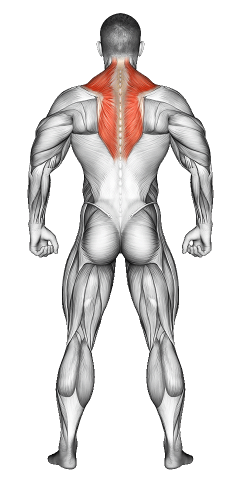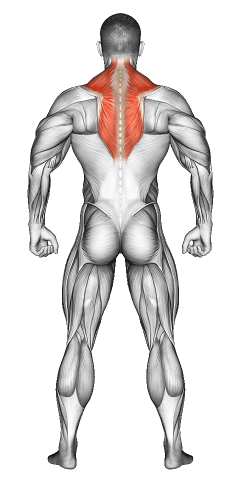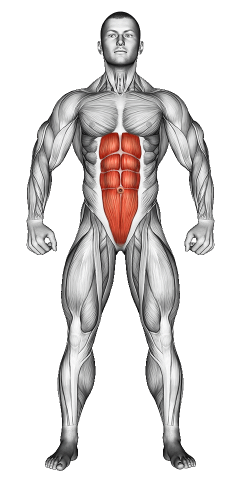Headstand Variation (Sirsasana Variation): Video Tutorial & Yoga Guide

Written By: Claude Michael
Updated: Jan 14, 2025
| Workout | Headstand Variation (Sirsasana Variation) |
| Primary Muscle Group | Shoulders |
| Secondary Muscle Group | Traps, Abs |
| Equipment Required | None |
| Force Type | Bodyweight |
| Mechanics | Balance and Stability |
| Exercise Type | Yoga and Inversion |
| Difficulty | Advanced |
Headstand Variation (Sirsasana Variation): Video Tutorial & Yoga Guide
- 1.Headstand Variation (Sirsasana Variation): Muscle Groups
- -1.1Primary Muscle Group
- -1.2Secondary Muscle Group
- 2.Headstand Variation (Sirsasana Variation): Step-by-Step Guide
- 3.Headstand Variation (Sirsasana Variation): Overview
- 4.Headstand Variation (Sirsasana Variation): Benefits
- 5.Headstand Variation (Sirsasana Variation): Pro Tips & Advanced Techniques
- 6.Headstand Variation (Sirsasana Variation): Progression Plan
- 7.Headstand Variation (Sirsasana Variation): Frequently Asked Questions (FAQs)
Headstand Variation (Sirsasana Variation): Step-by-Step Guide
- Step 1: Prepare your base. Interlace your fingers and place your forearms on the mat. Form a triangle with your forearms and position your head gently against your clasped hands. Keep your elbows shoulder-width apart.
- Step 2: Lift your hips. Tuck your toes and lift your hips high, coming into a Dolphin-like position. Walk your feet closer to your body to stack your hips over your shoulders.
- Step 3: Engage your core. Tighten your abs to stabilize your spine and avoid putting pressure on your neck.
- Step 4: Begin to lift your legs. Start by raising one leg toward the ceiling while keeping the other foot on the ground for balance.
- Step 5: Move into full headstand. Lift your other leg and bring both legs togClaude above your hips. Find your balance and align your body in a straight line from your head to your toes.
- Step 6: Hold the pose. Breathe deeply and maintain balance for 3-5 breaths or as long as you feel stable.
- Step 7: Exit safely. Slowly bring your legs back to a straight position. Lower one leg at a time to the ground, and rest in Child’s Pose to relax your neck and shoulders.
Headstand Variation (Sirsasana Variation): Overview
**The Headstand Variation (Sirsasana Variation)** strengthens your shoulders, arms, and core while increasing blood flow to the brain and improving focus. This inversion enhances balance and body awareness, stretches the spine, and calms the mind. It encourages confidence, stability, and a sense of inner calm.
Headstand Variation (Sirsasana Variation): Benefits
This exercise builds strength in the shoulders, arms, and core while improving balance, focus, and body awareness. It enhances blood circulation to the brain, strengthens the spine, improves posture, and boosts confidence and mental clarity.
Headstand Variation (Sirsasana Variation): Pro Tips & Advanced Techniques
- Warm Up First: Practice Dolphin Pose and Forearm Stand to prepare your shoulders and core.
- Engage Your Core: Keep your abs tight to stabilize your body and protect your neck.
- Use a Wall: Practice near a wall for support as you build confidence and balance.
- Move Slowly: Enter and exit the pose with control to avoid strain or injury.
Headstand Variation (Sirsasana Variation): Progression Plan
Beginner
Intermediate
Advanced
Headstand Variation (Sirsasana Variation): Frequently Asked Questions (FAQs)
What does Sirsasana Variation work on?
+It strengthens your shoulders, arms, and core while improving balance and flexibility.
Is this pose suitable for beginners?
+Beginners should master the traditional Headstand first and practice near a wall.
How long should I hold this pose?
+Hold for 3-5 breaths or longer if stable and comfortable.
What should I avoid in this pose?
+Avoid putting too much pressure on your neck or kicking up into the pose. Focus on control and balance.
Can this pose help with focus?
+Yes, the inversion requires concentration and improves mental clarity over time.
Share
Don’t Wish for It, Work for It – Join the FlexXP Newsletter Today!
Thank you for signing up for the FlexXP Newsletter!
This site is protected and the Google Privacy Policy and Terms of Service apply.


